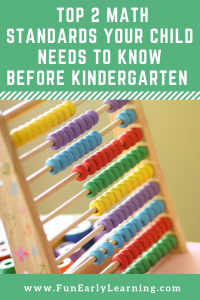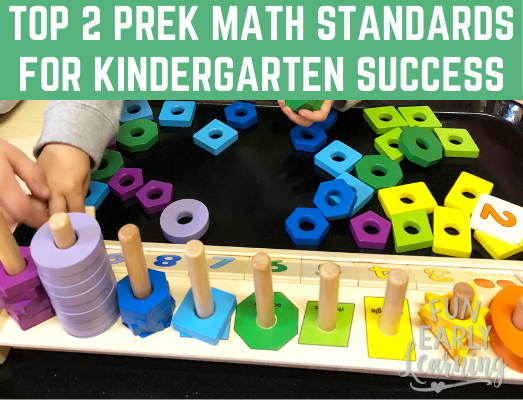
Did you know that learning math in early childhood is just as important as learning literacy skills? Understanding basic math, number, and shape concepts early on sets the foundation for learning more advanced concepts later. Does your child know the top 2 Math Standards necessary to be successful in kindergarten? We’ll walk you through what they are and how to teach them to your child!
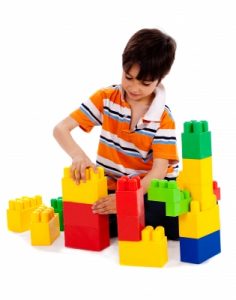
Did you miss part 1 of this series? No worries! You can read it here.
Did you know that children learn math concepts throughout their entire day? It’s more than just sitting them down and teaching numbers and counting. Due to their natural curiosity, children learn KEY math and shape concepts by playing and exploring with materials around them.
Top 2 Math Standards to Teach Your Child BEFORE Kindergarten
1. Knows number name, counts to determine the number of objects and compares numbers
- How to Assess: Can your child count to 20 by ones? Can they count how many objects there are (i.e. counting how many grapes you put on their plate)? Can they recognize and name numbers 1-20?
- How to Develop:
- Read books about counting with your child, such as How Do Dinosaurs Count to Ten?
- Provide numbers your child can see and play with every day. Hang number posters around their room or play room. Provide access to flash cards, calculator, number stencils, or number stickers.
- Make normal daily activities an opportunity for counting. Have your child pass out napkins to everyone during dinner and count how many napkins they will need. Count how many people are in front of you in a grocery store, the number of toys on the floor, how many books to read before bed, etc.
- Do learning activities and play games together. Choose activities that your child is interested in, such as our Play Dough Number Mats, Dot and Trace Numbers with Superheroes, or Snap Cube Numbers activities. You can also use our Complete Math Program to teach your child everything they need to know about math before kindergarten.
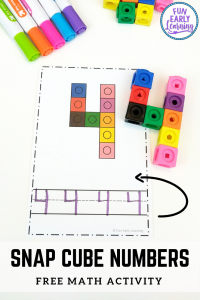
2. Shapes, Patterns, and Relationships Objectives
- How to Assess: Can your child sort objects by color, size, shape, and category? Can they identify and name shapes? Does your child understand objects in relation to each other – on top, behind, below, in front, beside?
- How to Develop:
- Provide hands-on materials your child can play with and sort daily.
- Provide shapes your child can see and play with every day. Hang shape posters around their play room, include boxes of different shapes for their play kitchen, and use hands-on activities such as our Dab a Dot Shapes and Snap Cube Shapes activities.
- Play games to help your child learn positional words, such as in, out, in front of, behind, below, beside, between, etc. Simon Says is a great game to play. You could say things like, “Simon says to sit on a chair, Simon says to sit behind a table, Simon says to sit next to a friend.”
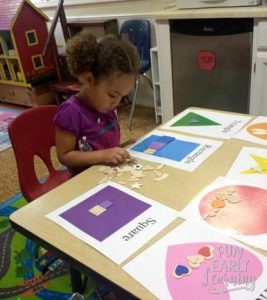
Hopefully we’ve shown you that MATH can be fun! Don’t stress about what your child needs to know before kindergarten. Simply provide your child with the opportunities and materials we discussed. Like we said, children have a natural curiosity for the way the world works. Given the right tools and environment, they will naturally develop the math skills they need for kindergarten.
This article only covers some of our assessment questions. We will provide our full assessment containing the list of skills children need for kindergarten at the end of this series.
In our next article we’re going to talk about the final section of our assessment – the Physical and Health Standards your child needs to know before kindergarten.
